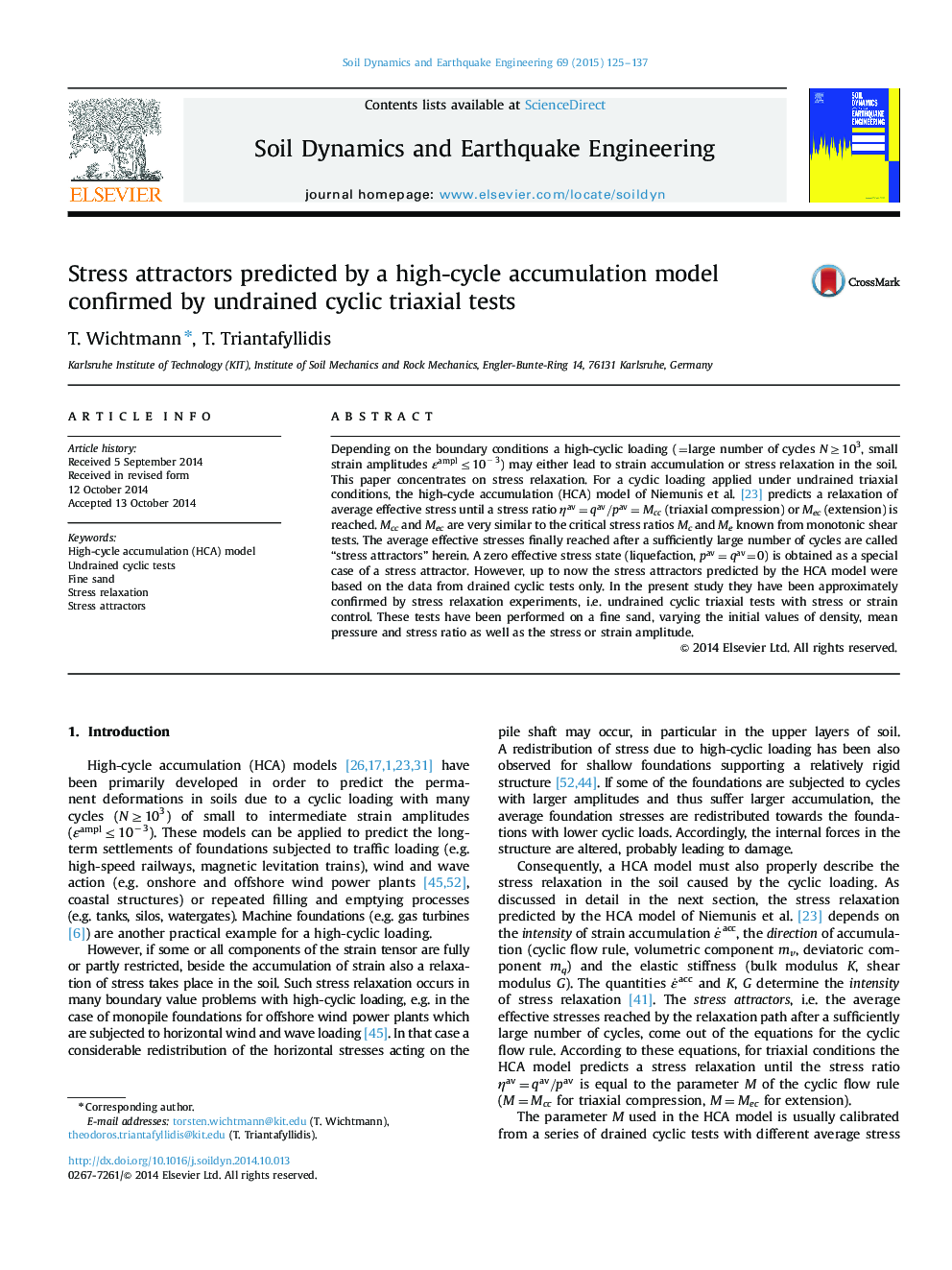| Article ID | Journal | Published Year | Pages | File Type |
|---|---|---|---|---|
| 6772147 | Soil Dynamics and Earthquake Engineering | 2015 | 13 Pages |
Abstract
Depending on the boundary conditions a high-cyclic loading (=large number of cycles Nâ¥103, small strain amplitudes εamplâ¤10â3) may either lead to strain accumulation or stress relaxation in the soil. This paper concentrates on stress relaxation. For a cyclic loading applied under undrained triaxial conditions, the high-cycle accumulation (HCA) model of Niemunis et al. [23] predicts a relaxation of average effective stress until a stress ratio ηav=qav/pav=Mcc (triaxial compression) or Mec (extension) is reached. Mcc and Mec are very similar to the critical stress ratios Mc and Me known from monotonic shear tests. The average effective stresses finally reached after a sufficiently large number of cycles are called “stress attractors” herein. A zero effective stress state (liquefaction, pav=qav=0) is obtained as a special case of a stress attractor. However, up to now the stress attractors predicted by the HCA model were based on the data from drained cyclic tests only. In the present study they have been approximately confirmed by stress relaxation experiments, i.e. undrained cyclic triaxial tests with stress or strain control. These tests have been performed on a fine sand, varying the initial values of density, mean pressure and stress ratio as well as the stress or strain amplitude.
Keywords
Related Topics
Physical Sciences and Engineering
Earth and Planetary Sciences
Geotechnical Engineering and Engineering Geology
Authors
T. Wichtmann, T. Triantafyllidis,
